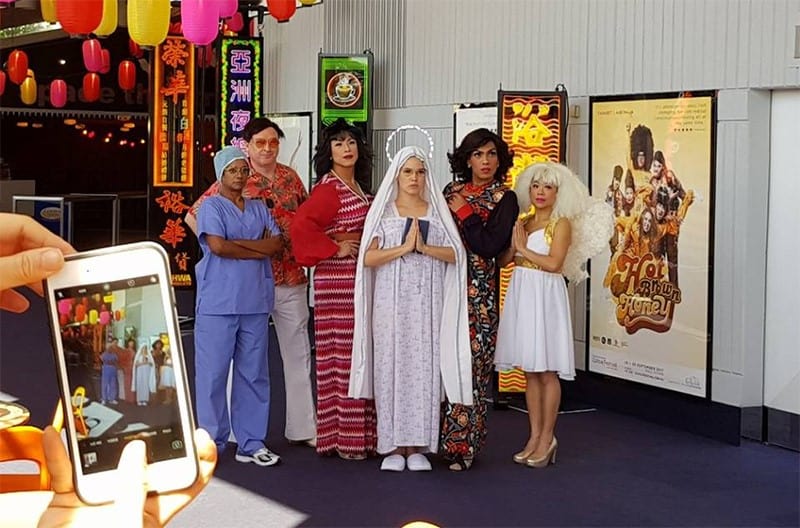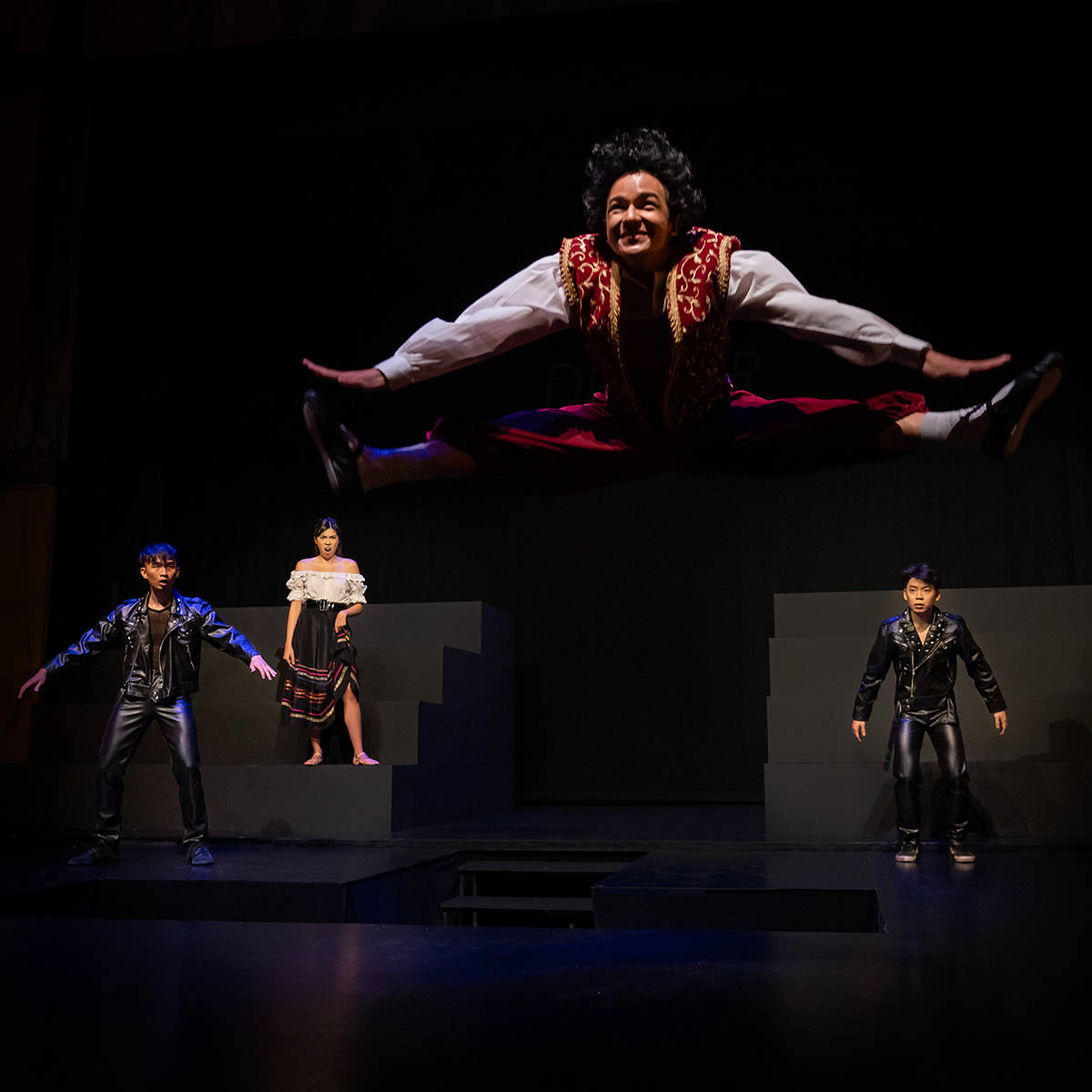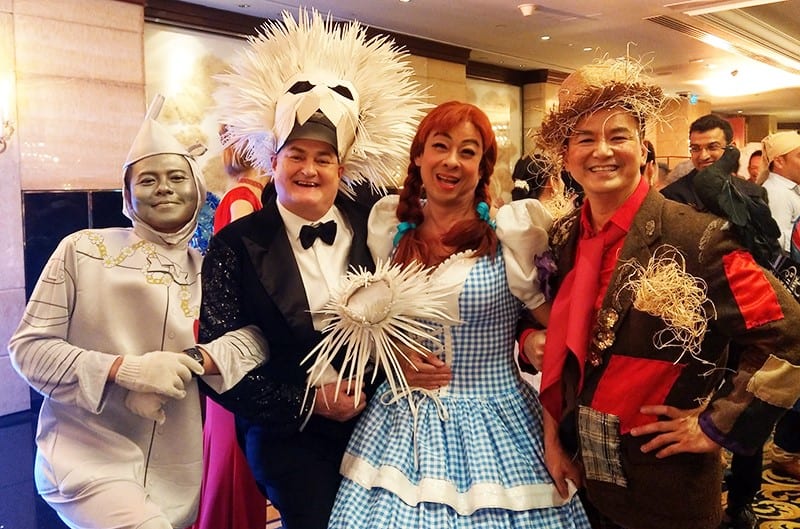Day 1 (27 September)
We arrive in Adelaide in the morning. The sky is what I call an Australian blue – it has the vivid purity of a mineral colour. We are picked up at the airport by a minder from the OzAsia Festival. I’m really excited about presenting HOTEL here because it’s the first time that W!LD RICE is going on tour with a work that was created wholly within the company.
Some of our past touring works include Emily of Emerald Hill (by Stella Kon), Animal Farm (an adaptation by Ian Woolridge), The Importance of Being Earnest(by Oscar Wilde) and Second Link (with curators Eleanor Wong and Leow Puay Tin). What would it mean to bring this work, which was written very specifically with a Singaporean audience in mind, beyond the island’s shores?

In the afternoon, I got to meet the cast at the Adelaide Festival Centre for a media photo call. They will be performing at the Dunstan Playhouse, a 620-seat theatre at the Centre. I go through the surtitles with our operator, Augustina Ongah. If you think the actors having to memorise multiple languages is impressive, consider how Augustina has to familiarise herself with all 9 languages in the play so her surtitles can be synced accurately.
We decide that we’ll need to indicate before some lines what the language spoken is as, sometimes, some characters switch between languages, and that switch is significant. For example, between Japanese and Malay, or Malay and Hokkien. There is definitely a dramaturgical process at work here, in which we have to consider how the Australian audience has a different kind of cultural literacy than the Singaporean one.

(L-R) Ivan Heng (Director/Performer), Joseph Mitchell (OzAsia Festival Director),
Alfian, Tony Trickett (Producer) & Jo Kukathas (Performer)
Day 2 (28 September)
It’s opening night! I’m a little nervous because we don’t have home ground advantage – meaning, the cultural proximity that comes with it, which allows us to use shorthands and slang. Many of our scenes, especially the ones set in 1975 (with the Bugis Street ladies) and 1995 (the inter-racial wedding) are almost entirely in Singlish, and we have made the decision not to surtitle those.
There’s also new multimedia – that iconic footage of Lee Kuan Yew crying at the press conference announcing Singapore’s separation from the Federation of Malaysia. In the Singapore run, only audio was played, because most Singaporeans would already be familiar with the image, and we wanted to de-mythologise it. But the team felt that the Australian audience would need more context, as they would have no idea whose gruff, snappy voice it was they were hearing.
So I settle in as the lights dim, and then the prologue begins, with that familiar, exhilarating cascade of horns and chimes. The first scene, set in 1915, goes off like a firecracker. In Singapore, I felt that it took a while for the audience to enter the world we had created, with its domineering British plantation owner stalking around in his Edwardian suit, a scene inspired by Somerset Maugham’s plays.
But the Australian audience has almost immediate access to it – no doubt this was due to their connection to British history. Yet, at the same time, they also respond to some of the more anti-colonial undercurrents in the play, especially to the parts that mention the British deploying Indian soldiers. After all, Australian national consciousness can be traced to the 1915 Gallipoli campaign, when Australian soldiers fought for the British army against the Ottoman Empire.
At the end of the show, the applause is warm and enthusiastic. Minister Grace Fu comes on stage with her delegation and speaks to the cast. She praises them and says, ‘Thank you for flying the Singapore flag high.’ Incidentally, projected on the multimedia wall, a giant Singapore flag is rippling in the wind. It is from the 1965 scene. I’m not sure whether it is anyone’s intention to keep the video playing, but it certainly forms the perfect backdrop.

Day 4 (30 September)
Today is the day when we perform both parts of the play in one day. Initial reactions have been overwhelmingly positive. A review in The Advertiser mentioned that HOTEL is “hilarious, moving, dramatic and addictive”. Another review in Limelight Magazine talked about how “the journey takes our emotions on a rollercoaster ride”.
The cast tells me how warm the audience has been. And it does make sense to show the work in a country that is part of the British Commonwealth – a good portion of the play references our colonial past. Australia is also a multi-cultural society, made up of its indigenous, white settler and immigrant communities. All these resonances make our HOTEL recognisable as ‘home’ over here (as a reviewer would later describe weeks after the show).
But what has also made performing in Australia meaningful is this idea of performing to a Singaporean diaspora. And it’s true that there are many Singaporeans who live and work in Australia, or who have made the country home, through migration and marriage. In some shows, when the national anthem played in our 1965 scene, I spied a few members of the audience rising spontaneously. This hardly happened in Singapore. “So patriotic,” Glen Goei, one of HOTEL‘s directors, remarked. And inwardly, I thought, “Probably homesick.”
At the end of our final performance, the audience rises to its feet. We make our way, floating on the memory of that applause, to the Festival Tent for supper and drinks. It is a little chilly, and we are far from home. But wherever family gathers is home, and these people, some laughing over glasses of champagne, some posing for photo mementos, some breaking into choreography lifted straight from the play, are family. No homesickness here.
























